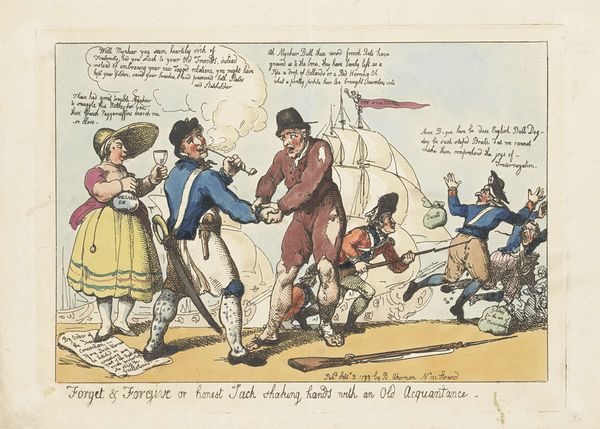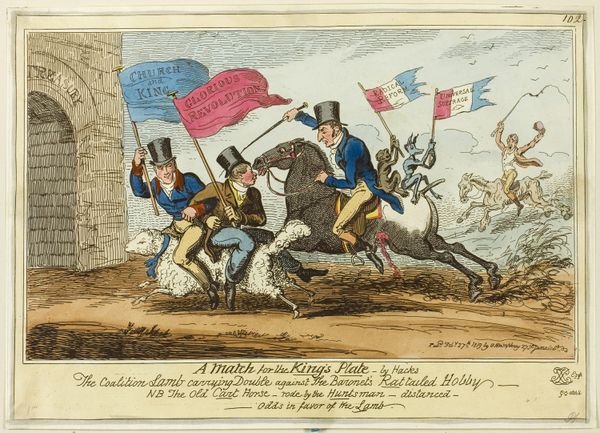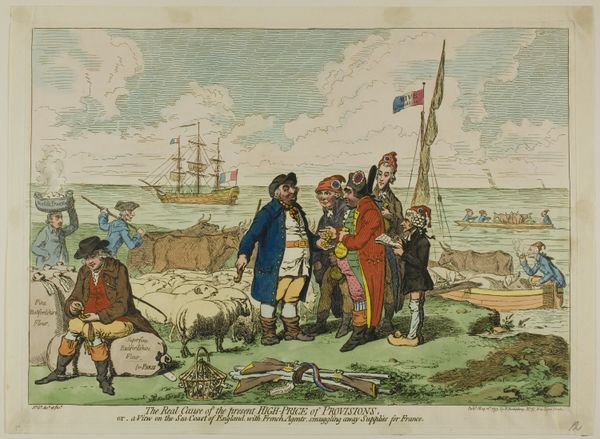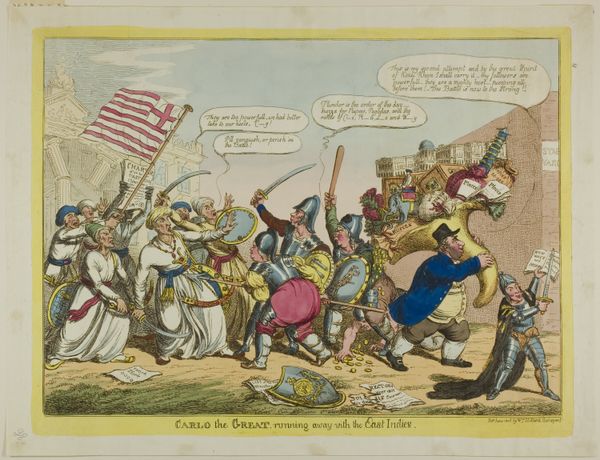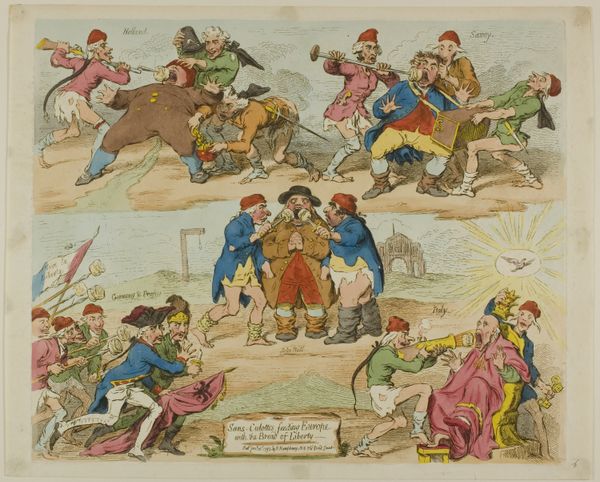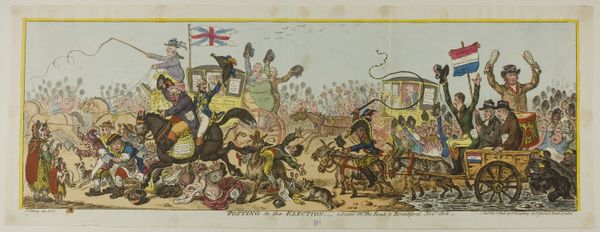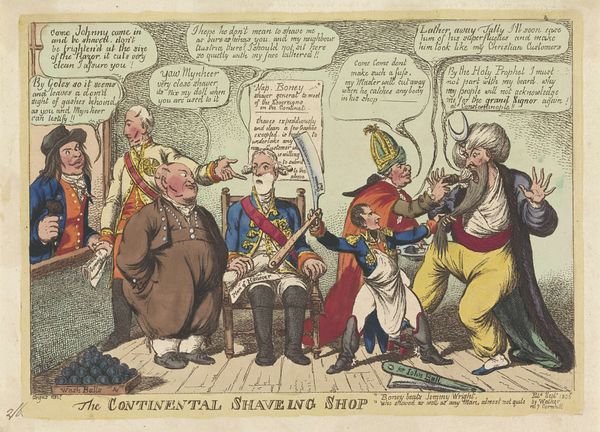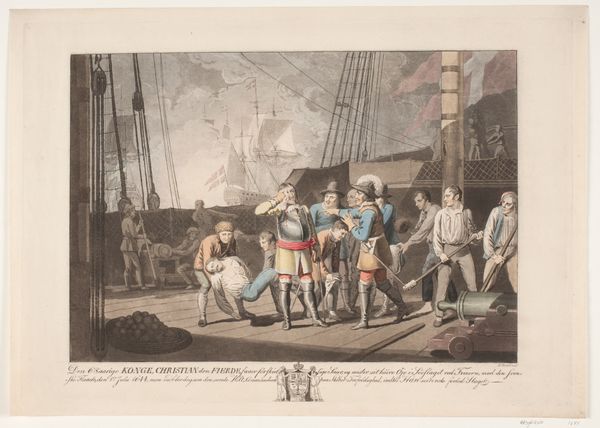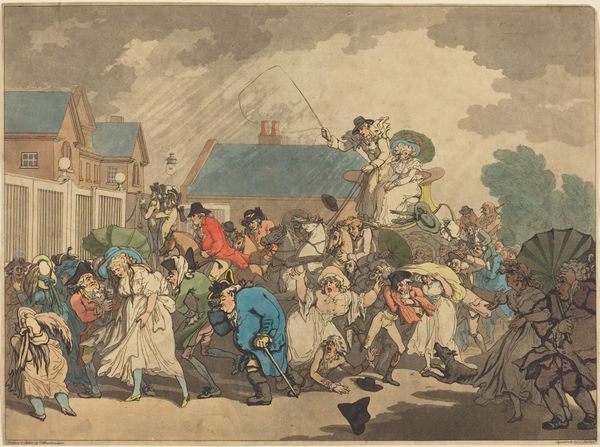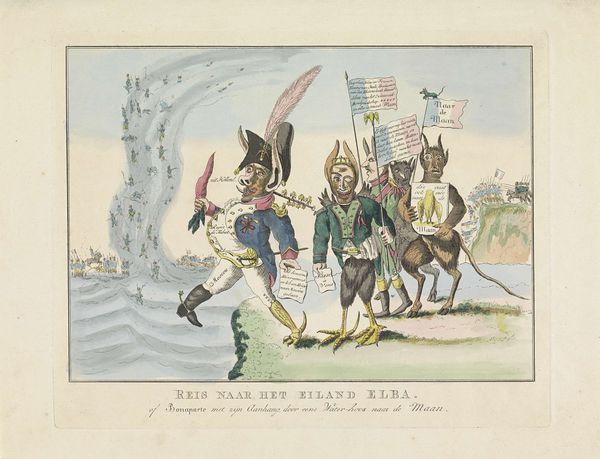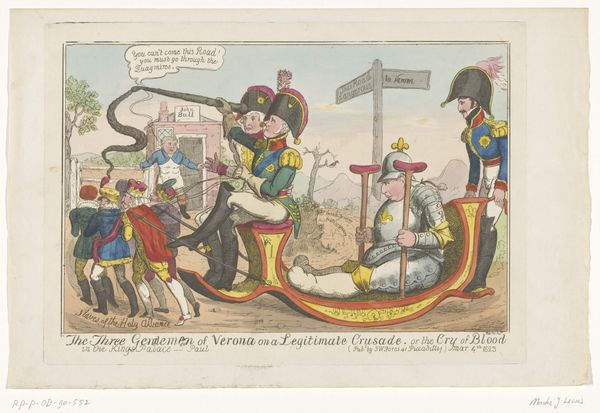
The Triumph of the Dey of Algiers Over the Naval Glory of England!! Possibly 1816
0:00
0:00
drawing, print, etching, paper
#
drawing
#
narrative-art
# print
#
etching
#
caricature
#
paper
#
personal sketchbook
#
england
#
romanticism
#
watercolour illustration
#
history-painting
Dimensions: 242 × 345 mm (image); 248 × 351 mm (plate); 255 × 357 mm (sheet)
Copyright: Public Domain
Curator: Here we have George Cruikshank's print, likely from 1816, titled "The Triumph of the Dey of Algiers Over the Naval Glory of England!!", presently residing at The Art Institute of Chicago. It's an etching, printed on paper, hand-colored with watercolor. Editor: Wow, it’s like a fever dream rendered in ink and watercolor. There’s this unsettling combination of playfulness and biting satire. You can practically hear the creaking of the wheels and the strained grunts of those poor souls pulling the carriage. It is, at its core, emotionally charged. Curator: Indeed, the piece satirizes the political and economic relationships of England in the post-Napoleonic era. Observe the details of its construction: the layered etching, the probable mass production of this piece. Note also the use of paper, which signals an intent to broadly circulate political messages to, more than likely, a middle-class public. It challenges England's self-proclaimed naval dominance and its ambivalent role in the slave trade following formal abolition in 1807. Editor: Absolutely. And consider the composition. The Dey, smugly seated, is literally carried by representations of what seem to be defeated European powers. It feels like a potent image of reversed fortunes and disrupted hierarchies, with Albion looking on in seeming impotence. It is as if to suggest they will become his slaves! Cruikshank, quite provocatively I'd suggest, employs his medium to make clear that the power dynamics are decidedly and disgracefully changing. Curator: The caricature is strong here, pushing the narrative. Each character is deliberately rendered to provoke visceral reactions, both negative and perhaps, in the context of the intended audience, positive. It also hints at growing class anxieties surrounding national identity amidst shifting geopolitical conditions. Editor: It’s interesting how Cruikshank uses this almost cartoonish style to tackle such heavy issues. It allows him to deliver a sharp critique while still engaging a wider audience. This, for me, gives this image such vitality—it is quite unlike viewing an oil painting on canvas as a tool for challenging established power. Curator: A perfect concluding remark. It underlines Cruikshank’s shrewd grasp of the moment, translating broadsheet techniques into a visual language, aimed at social persuasion through production of caricature for the British public. Editor: Precisely, a piece brimming with historical insight and artistic daring—makes one ponder how artists interpret political landscapes, particularly those rife with contradiction.
Comments
No comments
Be the first to comment and join the conversation on the ultimate creative platform.

